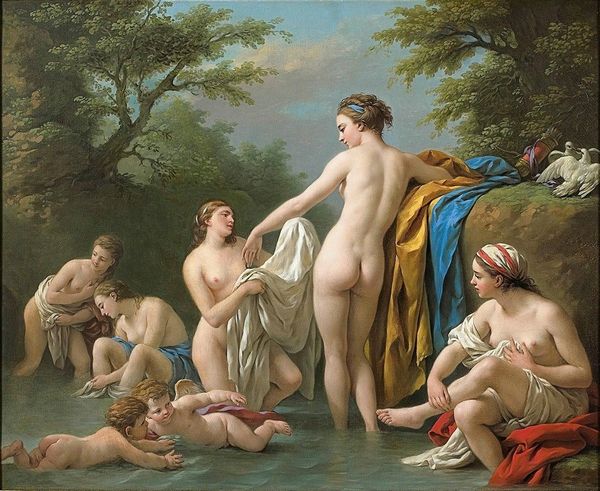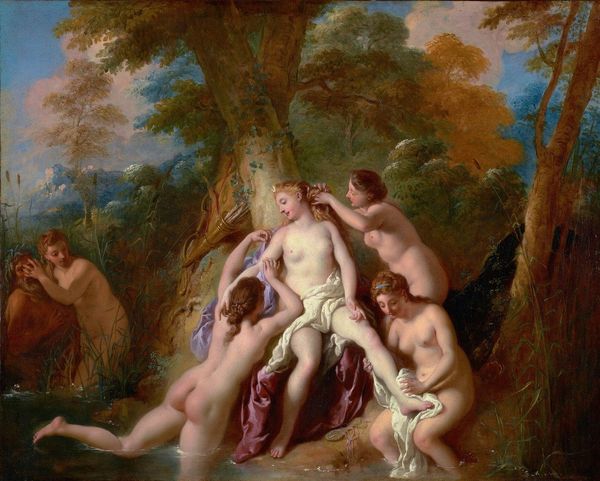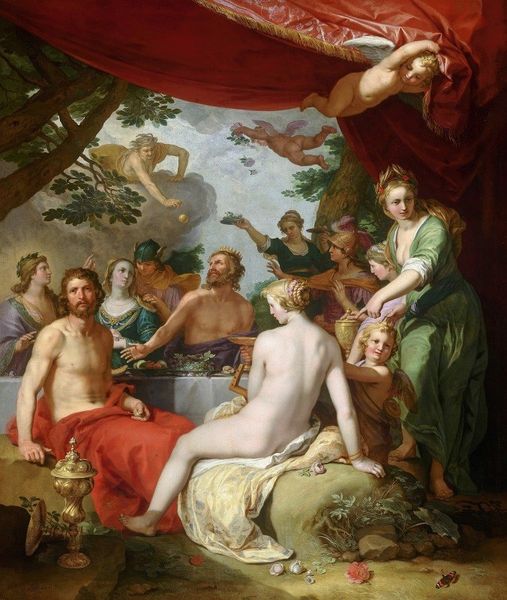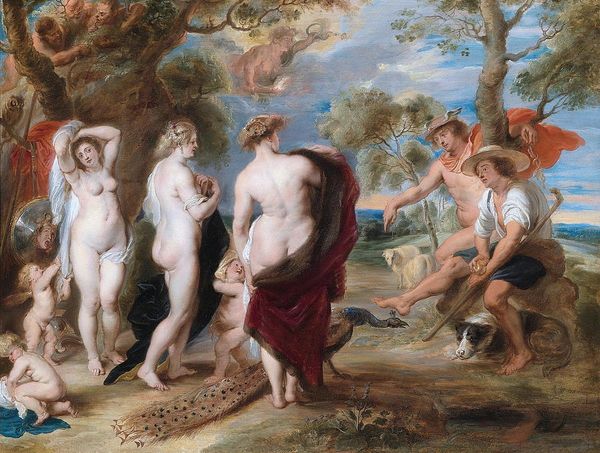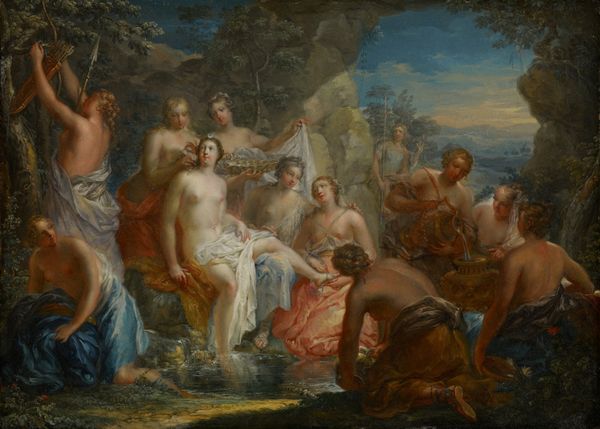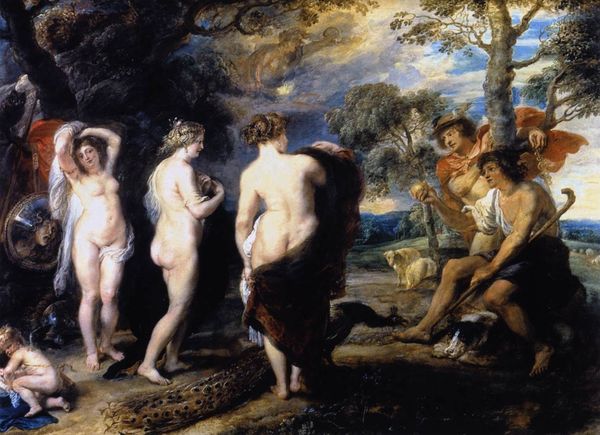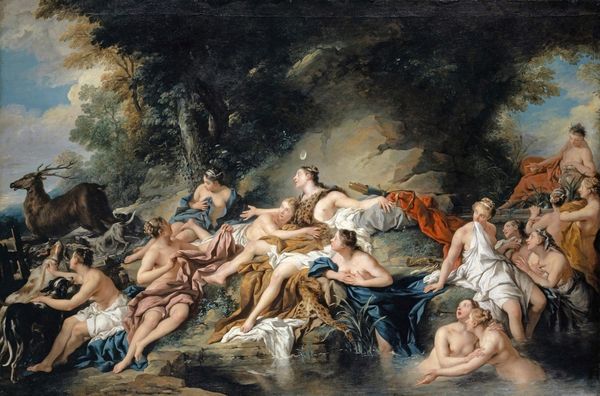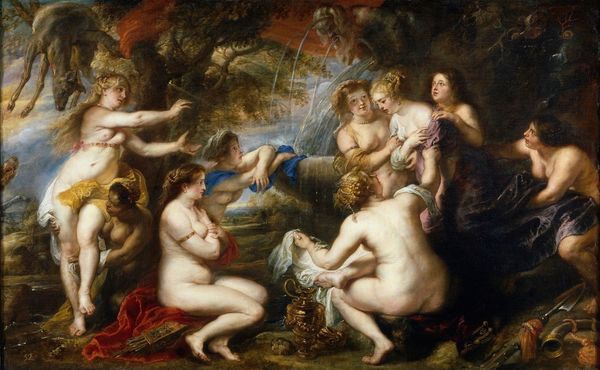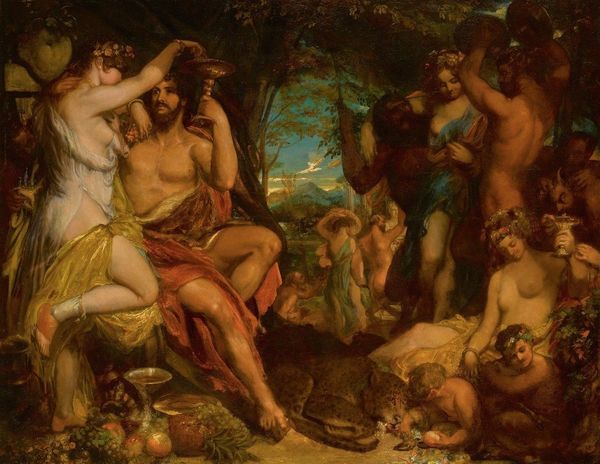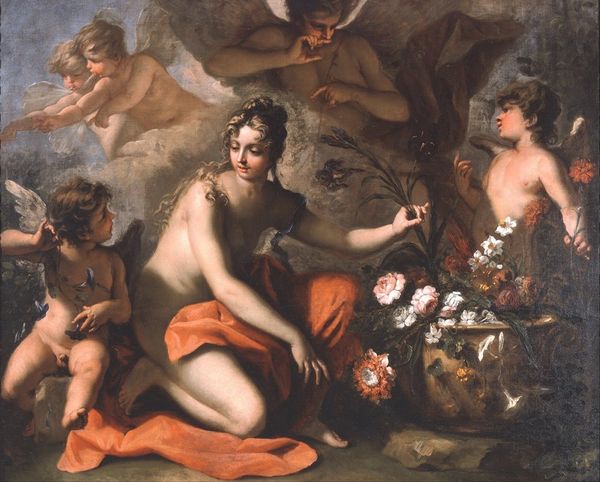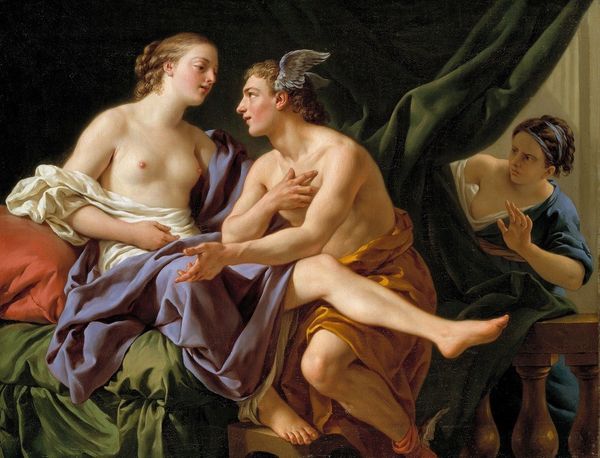
painting, oil-paint
#
allegory
#
baroque
#
painting
#
oil-paint
#
oil painting
#
mythology
#
painting painterly
#
history-painting
#
nude
Copyright: Public Domain: Artvee
Curator: Here we have Gerard van Honthorst’s “Diana with her Nymphs,” created around 1650 using oil on canvas. Editor: Immediately striking is the luminosity, wouldn't you say? The artist masterfully uses light to draw attention to the figures, particularly Diana, highlighting the texture of their skin and the drapery. The composition, though crowded, is expertly balanced. Curator: Honthorst’s treatment of this classical subject invites questions about patronage and workshop practice. His use of female nudes can be read through the lens of social norms and male viewership. The labor involved in producing these expensive materials would require both workshop collaboration and, of course, a buyer wealthy enough to enjoy it in their collection. Editor: The work also strikes me as baroque because of its pronounced diagonals, sense of movement, and opulence of color. And observe Honthorst's treatment of space – how he manages to suggest depth despite the density of figures, drawing our eyes to the center but still making everything in the periphery interesting. The interplay of cool blues with the warmer flesh tones enhances the visual drama. Curator: Absolutely, though I also wonder about how a painting like this reinforced existing social structures. Mythological scenes, particularly those involving female figures, were not only visually pleasurable, but also carriers of social meaning. Did the representation of Diana as vulnerable say more about contemporary anxieties than a tribute to Classical ideals? How might his access to the raw pigments reflect his economic situation in 17th century Europe? Editor: But don't we lose sight of its aesthetic achievement by focusing too intently on outside factors? Consider the painterly handling of the oil-paint. Honthorst demonstrates great technical skill, giving a sense of three-dimensionality and depth that captures the softness of human flesh. Curator: It's impossible to separate these concerns, wouldn't you agree? To truly appreciate “Diana with her Nymphs” we must acknowledge that cultural history is woven into its materiality. By questioning its purpose and methods of production, we understand its significance. Editor: Fair enough, but seeing his treatment of composition and texture in concert with mythological undertones reveals a deep sophistication in Honthorst's approach to narrative painting. It is interesting how our own ideas are challenged, either formally or thematically!
Comments
No comments
Be the first to comment and join the conversation on the ultimate creative platform.
